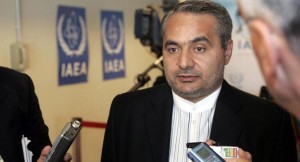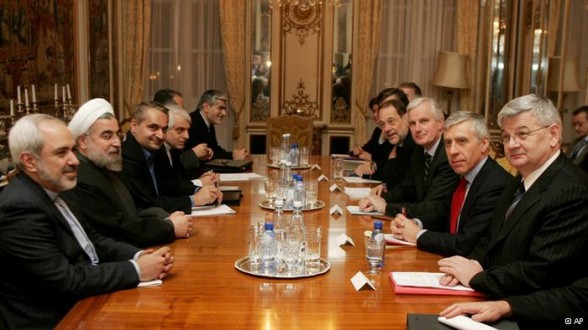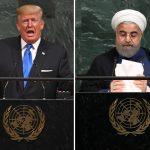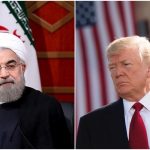by Peter Jenkins
Seyed Hossein Mousavian, the lead author of Iran and the United States: An Insider’s View on the Failed Past and the Road to Peace, has two objectives: to help American readers understand the Iranian perspective on the fraught US-Iranian relationship, and to advocate a sustained attempt to break the cycle of hostility that was triggered by the 1979 Islamic revolution.
Such is the suspicion on both sides of this relationship that some readers may wonder about the extent to which Mousavian’s descriptions of the Iranian perspective in this book, which was co-authored by Shahir Shahidsaless, can be trusted. This reviewer’s opinion is that Mousavian—a former Iranian ambassador who has been living in the US since 2009—whom the reviewer has known since 2004, is not trying to pull wool over anyone’s eyes. There is corroborating evidence for much of the information he advances. If in places the reader senses that he or she is not getting the full story, a respectable explanation is to hand: those who have worked at the heart of a government, as Mousavian has done, are bound to be “economical” with certain truths, as a British cabinet secretary once put it.
The Iranian political establishment can be reduced, simplistically, to two broad currents. The first contains those who nurture so great a sense of grievance towards the US, and so deep a mistrust, that they have no wish to end the intermittent cold war of the last 35 years. In the second current are those who understand that nurturing grievances is futile, who recognise that the US has legitimate grievances of its own, and who believe that a measure of détente is in the interest of both countries.
Mousavian belongs to the second current. So do Iran’s president since August 2013, Hassan Rouhani, and his foreign minister and chief nuclear negotiator, Mohammed Javad Zarif. Iran’s ultimate decision-maker and religious leader, Ayatollah Seyed Ali Khamenei, straddles the two camps. He is deeply distrustful of the United States, which he suspects of being bent on the overthrow of the Islamic Republic and of having no interest in détente, but he is ready to give the second current opportunities to prove him wrong.
Iran’s president from 2005-13, Mahmoud Ahmadinejad—who created a deplorable impression in the West, and gifted Israeli propagandists, by denying the reality of the Holocaust—came to office as a member of the first current, a “hard-liner.” But one of the revelations of this book is that he made more attempts than any previous leader to engineer a thaw in relations with the United States.
Mousavian’s intriguing thesis is that Ahmadinejad believed that achieving détente would be so popular with Iranian voters that it would help him to become Iran’s equivalent of Vladimir Putin.

Amb. Mousavian was the spokesman for Iran in the negotiations over its nuclear program with the international community 2003-05.
The middle section of the book is given over to an account of the US-Iranian relationship from the author’s first-hand experience. Mousavian does not flinch from addressing all the episodes that have generated a sense of grievance on one side or the other, from cataloguing the false starts and missed opportunities, or from exploring the incidents that have set back relations just when an improvement seemed to be in the offing.
He has been so well connected to several leaders of Iran’s nezam (establishment) during most of the last 35 years that these chapters amount to a fascinating story, told from the inside of a political system that many foreigners find opaque.
It is somewhat remarkable how often relations have been set back just when it seemed that a thaw was about to set in. In 1992, intelligence about Iranian nuclear purchases undermined the good will created by Iran’s intercessions to secure the release of US hostages in the Lebanon. In 1996, the Kolahdooz incident set back relations with Europe that had been improving since the early 90s. In 2002, the Karine A incident negated the cooperation that the US had been receiving from Iran since 9/11, and it led to the infamous naming of Iran as a member of the “Axis of Evil” in a State of the Union address.
Mousavian suspects that these and other setbacks were not coincidental; they were the work of people who had no interest in a thaw. That theory would account for the haste with which Iran’s enemies have asserted Iranian responsibility for such incidents. But in the last analysis, answers to these puzzles of responsibility have yet to be authenticated.
In any case, how realistic is it to suppose that an improvement in US-Iran relations could be achieved?
Mousavian admits that there are formidable obstacles to full normalization, and he seems to doubt that the US and Iran will become best buddies any time soon.
Chief among the obstacles, seen from the US side, are Iran’s refusal to modify its view that the Jewish character of the Israeli state, proclaimed in Israel’s constitution, is bound to result in injustice, oppression and humiliation for Palestinians living in Israel, and has in fact done so—plus Iran’s determination to support a fellow-Shia movement that Israel and the US deem to be terrorist, Hezbollah.
On the Iranian side, Ayatollah Khamenei fears the consequences of anything more than a modest rapprochement. In his view, the opening of a US embassy in Tehran, for instance, would create opportunities for US subversion of the Islamic Republic; and greater exposure of the Iranian population to all things American would undermine respect for Islamic values. He remains convinced that the US seeks the overthrow of the Islamic Republic.
Yet Mousavian believes that there is a middle ground between mutual hostility and full normalization. He sees scope for the US and Iran to work together, on a basis of mutual respect, to achieve common objectives in areas where their interests coincide. At present those areas include Afghanistan, counter-narcotics, WMD counter-proliferation, energy security, and combating the Jihadi threat in Iraq and Syria.
Developing what Mousavian terms “a framework for cooperation” should be accompanied, he suggests, by an agreement to lock the drawer that contains both sides’ equally long lists of historic grievances, and by a commitment to eschew the rhetoric of enmity and aggression.
The key to taking relations on to a new plane, he argues, is resolving the dispute over Iran’s nuclear activities. This dispute has been fuelled by Israel, partly perhaps for Palestine-related reasons, and by the US’ strategic balance of power considerations.
He believes that a resolution is nonetheless possible. The progress made by American and Iranian negotiators since September 2013, and the alarm that this has caused Israel’s prime minister, suggests that he is right.
Mousavian warns his readers against pressing Iran to cut back its uranium enrichment capacity from the current level, which, objectively, is modest and cannot reasonably be construed as threatening as long as its use is monitored by the International Atomic Energy Agency (IAEA). He fears that the US and EU negotiators will fail to appreciate the cultural and psychological factors that would lead the Iranian nezam to prefer no deal to the kind of capacity reductions that the US and EU have been seeking.
The Islamic Republic is rooted in nationalist as much as in religious values, he explains. The nezam is quick to perceive threats to Iran’s sovereignty and national dignity. They would rather defy than be humiliated. They are ready to engage in reasonable compromise but they will not capitulate.
It is these insights into the Islamic Iranian mind-set that are likely to make this book exceptionally interesting for all but students of Iran—and even they may like to compare their views with those of Mousavian.
He will doubtless be pleased if the book sells well, as it deserves to do. But what will please him most, I suspect, is if it contributes to a better understanding of Iran in the US and in Europe, and if it helps bring to a close a quarrel that reflects well on neither side.
This review was first published in Farsi by the BBC Persian Service on October 13, 2014.






Normal relations does not mean endorsement of US foreign policy. Iran has indicated a number of times it will accept whatever deal with Israel that the Palestinians accept.